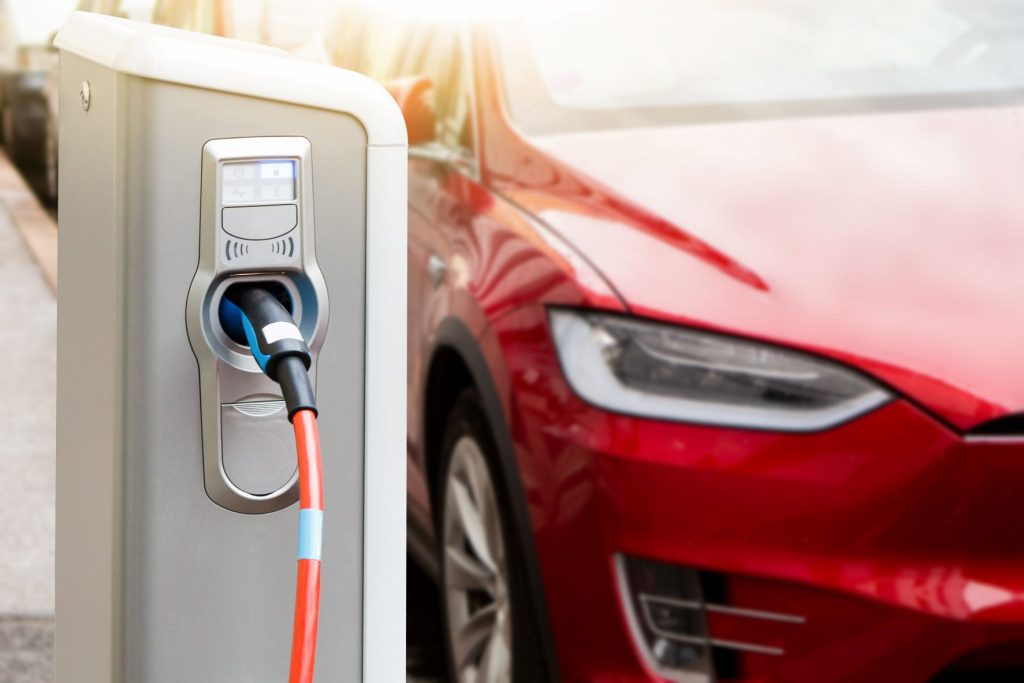news
year 2022

Many airports have used IGBT Power Solutions only for the last ten years. What is often forgotten is that IGBT technology has been used across other industry sectors for nearly five generations and has become an extremely reliable technology – from charging your electric car to supporting the largest photovoltaic production fields. IGBT stands for an insulated-gate bipolar transistor. At the airside we mostly use thyristor technology – in use for the past 40 years, it does what it needs to do but is no match for IGBT technology.
Why does IGBT take up a prominent role in the electrification of our industry?
Nothing beats IGBT technology.
Although IGBT is relatively new to the airfield market, it is considered to be an extremely stable solution recommended for industrial and scientific applications. Especially in the 5 to 20kW range, the performance of IGBT beats most other technologies. The technology is used because of its improved performance and easy configuration capabilities. While the thyristor is phase-controlled with limited switch-off capabilities, its high-frequency performances are not outstanding. With IGBT, the control* and switching frequency is in the 5 – 20kHz range which makes it far easier to manage.
The thyristor is still considered a good option for smaller power needs. However, the quality of the current with thyristor converters cannot be compared to IGBT. Large currents, where the current distortion is very big, are mostly being delivered using IGBT. The power factor in the ramp-up phase is weaker due to a large reactive power with a stronger TCO due to power factor correction. For thyristor-based converters, it’s not simple to have a power factor corrector because of a big injection of harmonics at the distribution point.
The cost of energy and distribution also play a role in understanding the benefits of IGBT. Thyristor converters negatively impact the cost of energy and this can run up to well above 20% difference in energy costs. And let’s not forget the cost of installation. The latter is mostly related to the size of the equipment as using thyristor means you often oversize the equipment needed.

Why airports can benefit from better performance and lower energy bills thanks to IGBT?
Think higher efficiency.
Suppose you are a new airport; if your goal is to come to a power factor of 0,9 then the infrastructure can be built in a more modern way compared to when using thyristor technology. IGBT not only has a better performance, it is also cheaper on the energy bill.
This is confirmed by a comparison of the different technologies, as per the Semikron study (see slide 13 + 1st graphic on slide 14) which shows a big gap between both technologies. The study also shows a higher degree of reliability and performance for the IGBT.
The argument of IGBT versus thyristor is similar to the argument between LED and halogen – both perform the same function but the latest LED technologies largely outperform halogen on all levels. That’s the same case for IGBT – the technology outperforms thyristor across parameters. From Swiss based European Organization for Nuclear Research CERN to the largest photovoltaic production fields in California. And from Tesla cars and the Fast Chargers that are based on high frequency IGBT to large industrial factories such as ABB that use engines to the most modern AC systems, all are based on the IGBT technology because of the higher efficiency rates involved.
Why OCEM Airfield?
In house expertise and long term experience
OCEM Airfield has acquired vast expertise on the technology thanks to AUGIER Power and OCEM Power Electronics. Both are focused on high voltage power solutions that have very specific needs. This wide range of experience and in-house expertise distinguishes OCEM Airfield amongst other players, when it comes to deploying IGBT technology for the airfield.
Time for a change in how airfields are powered. Time for energy efficient and future proof IGBT technologies
Want to find out more? Contact us via marketing@ocem.com.
(*) The electrical equipment to supply the CCRs should be sized according to the CCR nominal rate and not simply on the load that is being measured in a certain moment. For this reason, the most important benefit of an IGBT-based CCR is, again, its control performance. Thyristor-based CCRs have intrinsically narrower control dynamics, therefore it is often necessary to apply some “safety margin” during the design phase of the correct CCR size over the circuit, in order to keep the current stable. This is especially true with non-linear electronic loads. This is the main reason why in practical airfield applications a high-performing IGBT CCR can sometimes be kept “smaller” than its thyristor counterpart, once its overall load is fixed. This lower-size of the CCR brings with it lower costs for the CCR itself, as well as for the supply equipment (cables, etc.).